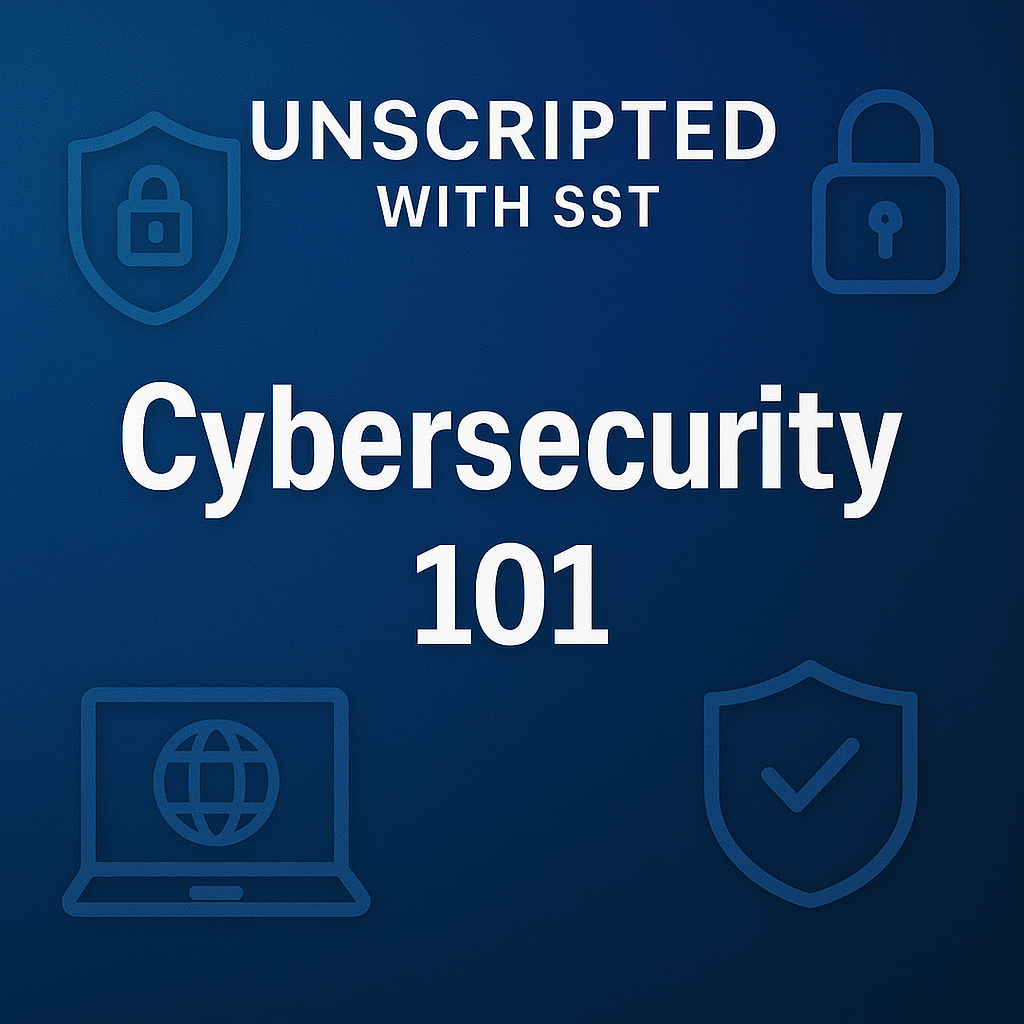Cybersecurity 101 – Unscripted With SST Episode Three

Cybersecurity 101
In this episode of Unscripted with SST, Beau Elston joins the team to break down what cybersecurity really means for modern businesses. From debunking common myths to explaining how to get started with frameworks like CIS, this episode is packed with insights every SMB leader should hear.
Cybersecurity Is No Longer Optional
The days of relying on antivirus and a firewall are long gone. Cybersecurity is now a fundamental part of running a business. Whether you’re a 10-person office or a growing company with cloud infrastructure, attackers don’t care about your size. They care about opportunity. And opportunity often looks like outdated systems, weak configurations, or employees who aren’t trained to spot a phishing email.
Why the Human Element Still Matters Most
You can invest in cutting-edge tools, but without educating your team, you’re still exposed. Most breaches are caused by human error. That could be an employee clicking a malicious link or reusing passwords across platforms. The best defense is building cybersecurity into your culture. Regular training, phishing simulations, and clear policies about access and data handling are essential.
Don’t Assume the Cloud Has You Covered
A move to the cloud doesn’t mean your data is safe by default. Many platforms ship with basic settings that need tuning. Multi-factor authentication is helpful, but it is not a guarantee. Attackers can still gain access through session hijacking or social engineering. Every cloud workload still needs monitoring, access control, and periodic reviews.
Start with a Framework That Makes Sense
SST recommends the CIS Controls framework, especially for SMBs. It breaks cybersecurity into 18 categories with specific safeguards that are grouped by complexity. Implementation Group 1 is a great starting point for most businesses. It gives clear, non-technical guidance that helps reduce risk without overwhelming internal teams. If you’re not sure where to start, begin with inventorying your hardware and software. You can’t protect what you don’t know you have.
Why Incident Response Planning is a Must
Every business needs a plan for when something goes wrong. Incident response is all about preparation. Knowing who to contact, what systems to isolate, and how to respond quickly can make a major difference. SST encourages businesses to define this process well in advance to avoid costly delays during a real event.
Three Common Misconceptions That Need to Go
-
“We’re too small to be a target.” Not true. Smaller businesses are often targeted because they’re less protected.
-
“We moved to the cloud, so we’re secure now.” The cloud changes your risks. It doesn’t remove them.
-
“Cybersecurity is too expensive.” A breach is far more expensive. Downtime, data loss, reputational damage, and potential regulatory penalties add up quickly.
You Don’t Need to Solve It All at Once
Cybersecurity is a journey, not a destination. Start with the basics. Train your people. Know your assets. Put some boundaries around who can access what. Use a framework to prioritize what’s next. And if you don’t have the internal resources to manage that, work with a trusted partner who does.
Take Action Before the Headlines Hit You
Cyberattacks don’t always look like the movies. Sometimes they start with a login from a strange IP. Or a forwarded invoice that redirects funds. Or a dormant account being used in the background. By the time the damage is visible, it’s too late. Most breaches are preventable with the right layers in place, and many more are containable with good preparation.
Your Next Move
Cybersecurity isn’t a luxury or an IT problem. It’s a business necessity. Aligning to a framework like CIS gives your organization structure, clarity, and direction. You don’t need perfection. You just need to take the first step. If you have internal resources, start small and build momentum. If not, partnering with a managed service provider like SST can give you the guidance and support to move forward with confidence. Either way, the worst time to start is after something goes wrong.

